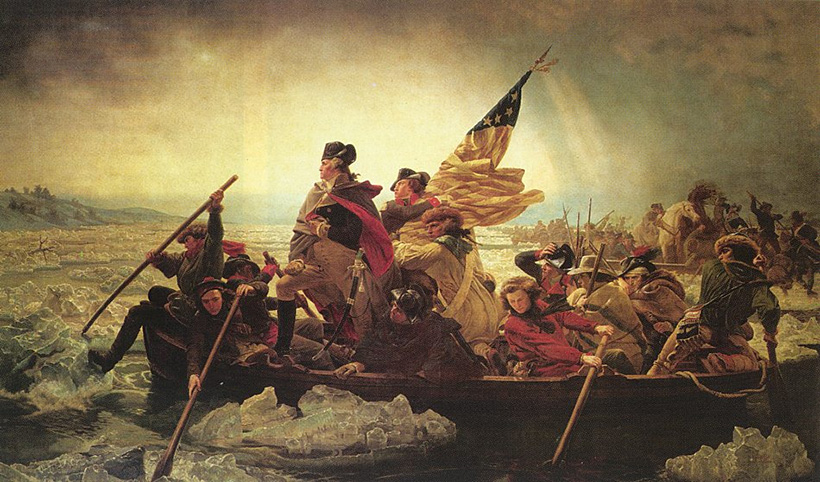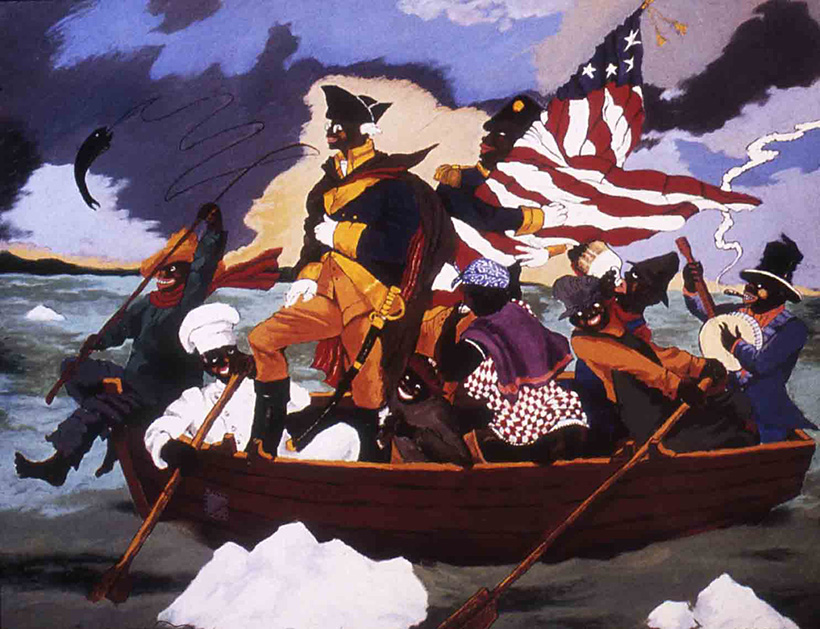This entry was from when I was teaching Digital Arts, and had an assignment where students had to learn to combine images in Photoshop. On a technical level, I was looking for the ability to take parts of from different images and balance the color, the scale, and the textures so that when placed together they form a cohesive whole. On a compositional level I wanted to see an image as sophisticated as one made in any other two-dimensional medium. And on the level of content, I wanted unique images relating to the idea of Myth.
To introduce the assignment, I asked what exactly is Myth? and I gave the class:
definitions of myth and mythology:
a body of stories tied to a culture or time period
a story, often based on or involving historical events, that illuminates the world view or customs of a people, or explains a belief, or natural phenomenon
an story that uses allegory (symbolic representation) to describe the human condition
a popular belief or tradition that has grown up around something or someone
an unfounded or false notion
So Really, What is myth?
Myth as a cultural story
For many of us, when we think of Mythology, Old Greek Gods come to mind. And often for Western Civilization when we talk about Myth this is what we are referring to.
On a larger scale, common stories exist in all cultures through all of history. So one way to expand our knowledge is to look at the common stories of all cultures.
 Yoshitora, Fox Wedding, 1850-60
Yoshitora, Fox Wedding, 1850-60
Here we have a print from the Artitist Utagawa Yoshitora from 1850-1860. It depicts the Fox’s wedding procession, a popular explanation of a sun shower, when rain falls while the sun is shining. We will talk about the trickster later in the semseter, but just know sun showers and tricksters is a comman mythology throughout the world.
Mythical Man, Mythical Woman
Often when we look at a myth it is an individual who comes to the forefront. Sometimes these mythological figures are Gods, like Zeus, Shiva, or Thor. Sometimes they are a hybrid of God and Man, History and Story, such as Hercules, Jesus, or the Buddha. Sometimes, like David battling Goliath, or Gandhi standing up to the British, they are the deeds of mortals whose courage or abilities propel them into the ranks of heroes.
 Washington Crossing the Delaware, 1851
Washington Crossing the Delaware, 1851
Take a look at this picture by Emanuel Leutze of Washington Crossing the Delaware from 1850. Here we see how one human can transcend the ranks of mere mortal an become a Myth. Images or stories like this bring us beyond history and into Mythology. If you’re curious, this article takes a closer look at this painting, describing where is remains truthful, and where is strays from reality in order to uphold the Myth.
Also, if you don’t mind a little swearing, be sure to check out this humorous rap that pushes the limits of the Myth of Washington.
Myth as Lies and Superstition
The term Myth often has a negative connotation, and because of this people can get touchy when you say The Myth of “X” if they believe in “X”. To call something a Myth sometimes has the underlying assumption that there is s little (or a lot) of truth missing from it. For instance, when I say “The Trickle Down Theory is a Myth” what I am really saying is that this was a lie used to put more money into the hands of rich people and it has no basis in truth.
 Robert Colescott, George Washington Carver Crossing the Delaware, 1851
Robert Colescott, George Washington Carver Crossing the Delaware, 1851
We used parody in our last projects, so when I say this image by Robert Colescott called George Washington Carver Crossing the Delaware from 1975 uses parody to make its point, this should come as no surprise to you. But what might be a little harder to figure out is, how is it using Myth?
For one, we see how by altering the picture by Leutze above, Colescott has called into question the validity not only of the Myth of George Washington, but also of the Myth of America. Because as we all know there are many sides to this United Stated of America, and some are darker than others. For every Washington we also have a Jim Crow.
What Colescott has done here, is used stereotypes and humor to point out the lies and fallacies inherent in the perception of the African American. And by drawing parallels through history, he has also raised figures such as Renaissance Man George Washington Carver into the level of Myth.
Modern Myths
Sociologists studying contemporary history like to draw parallels between the past and present, and so the question often comes up, “What are our modern Myths?” We have already crossed many myths that still pervade contemporary society. Religions stories, although often tied to events a couple thousand years old, still play a big part in our society. And the history of the recent past quickly elevates into the level of Myth. We have to look no further back than the presidencies of Kennedy or Reagan to see men whose facts are quickly mixed with fiction.
Another realm that is often mined for contemporary myth is that of the Superhero. Now, before you go off pasting together an image of Wolverine or the Joker, I’m going to insist you read this blog post: [“Superheroes are not Mythology”]((http://www.thevisuallinguist.com/2006/04/superheroes-are-not-mythology.html), including the comments, and be ready to defend your work on ineffectual grounds.
One thing that is an interesting parallel here that I’d like to point out, is the loss of the author in both classical Mythology and Contemporary Superheroes. The story of Superman (copyright aside) belongs to whoever retells the story, and the details they add or take away, much as the story of Hercules belongs as much to Homer as it does to Euripides. Although I’m not going to go into it now, this is tied to the notion of The Death of the Author, a term coined by Roland Barthes, who we will look at next.
Myths and Philosophy
French intellectual Roland Barthes wrote a book called [Mythologies](https://ceasefiremagazine.co.uk/in-theory-barthes-2/, where he dissected the culture and times in which he lived. In essays originally printed in the newspaper, he described the mythology that surrounds things as common as The World of Wresting, Toys or Soap-powders and Detergents , and as current as the Plastic and Margarine.
In The Jet Man he describes the Myth of the Astronaut and how this goes beyond the Myth of the fighter-pilot:
The pilot-hero was made unique by a whole mythology of speed as an experience, of space devoured, of intoxicating motion; the jet-man, on the other hand, is defined by a coenaesthesis [sensation as a whole] of motionlessness (‘at 2,000 km per hour, in level flight, no impression of speed at all’), as if the extravagance of his vocation precisely consisted in overtaking motion, in going faster than speed. Mythology abandons here a whole imagery of exterior friction and enters pure coenaesthesis: motion is no longer the optical perception of points and surfaces; it has become a kind of vertical disorder, made of contractions, black-outs, terrors and faints; it is no longer a gliding but an inner devastation, and unnatural perturbation, a motionless crisis of bodily consciousness…[The jet-man] no longer seems to know adventure or destiny, but only a condition.
If this seems a little hard to grasp, or if you’d like to see just how abstractly this myth can be depicted, take another look at the Star Gate sequence of 2001: A Space Odyssey. This Myth has propogated itself into numerous science fiction scenes where spaceships go into Warp, or Hyperspace